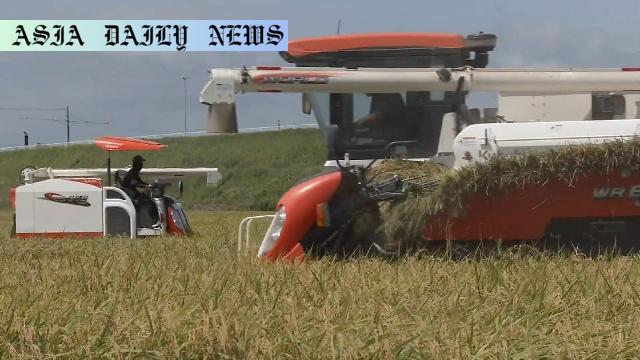Rice Crisis: The agriculture ministry’s oversight caused shortages and price hikes in Japan due to misjudged demand and other issues.
Misjudgment by Japan’s agriculture ministry led to the rice crisis.
Officials failed to anticipate tourism-driven demand increase.
Climate changes reduced milled-rice yields furthering shortages.
The ministry delayed decisions on releasing rice reserves.
Recommendations made to boost production using abandoned farmland.
Highlighting the need for smart technology in agriculture.

Introduction to Japan’s Rice Crisis
In recent months, Japan has grappled with a growing rice crisis, a staple food central to the country’s diet, culture, and economy. Skyrocketing prices and shortages of rice have caused widespread concern among citizens, businesses, and policymakers. A government-led investigation attributes this crisis to bureaucratic oversights by Japan’s Ministry of Agriculture, which failed to foresee shifts in rice demand. Additionally, climate change and outdated agricultural practices have worsened the situation.
Economic and Demographic Misjudgments
The root of this crisis lies in the ministry’s miscalculated assumption that rice demand would decline as Japan’s aging population decreases. They underestimated the effects of inbound tourism, which has grown substantially in recent years. Tourists from Southeast Asia and beyond are heavily influencing Japan’s food demand, especially for rice-based dishes. While ordinary consumption patterns did not indicate growth, the lack of perception regarding non-resident demand reveals a blind spot in Japan’s agricultural policy planning.
The Impact of Climate Change on Rice Production
Adding to the crisis, unseasonably high temperatures disrupted the agricultural yield. Japan has long been struggling with changing climatic conditions, which now directly hamper traditional milled-rice yields. Poor harvests amplified the existing demand-supply gap. Despite clear indications of these challenges in previous years, the ministry did not initiate countermeasures, such as adaptation techniques or alternative cultivation strategies, to safeguard future output. These environmental variables now pose an existential threat to the centuries-old rice farming system.
Delayed Management of Rice Stocks
The investigative report also points out that the ministry believed there was adequate rice present in the market, which hindered proactive distribution measures. Stockpiled rice, meant for emergencies, was not released in a timely manner. This bureaucratic overconfidence exacerbated the crisis when actual shortages began unfolding, prompting belated attempts to bridge the gap from strategic reserves. The lack of institutional flexibility to respond promptly to evolving market scenarios hints at deeper systemic flaws in agricultural oversight.
Policy Recommendations to Address the Crisis
To resolve the current crisis and prevent future occurrences, many recommendations have been made. One key proposal is to leverage idle and abandoned farmland for renewed rice production. In addition, consolidating smaller paddies into larger, more efficient plots, coupled with advanced agritech solutions, can help raise productivity levels. More accurate demand forecasts are also essential, especially ones accounting for the tourism sector and a changing population demographic. Furthermore, building a responsive strategic reserve mechanism will ensure quicker market savior actions in emergencies like this.
A Shift Toward Sustainability and Modernization
The rice crisis underlines the critical need for modernization in Japan’s agricultural industry. Automation and precision farming could counteract labor shortages attributed to the aging population, while adopting environmentally resilient farming practices could cushion the effects of climate change. Innovative policy directions and investments in agricultural technology are pivotal to fostering sustainable production models that meet domestic and international demand alike.
Final Thoughts
Japan’s rice crisis offers an eye-opening case of how outdated assumptions and mismanagement can drastically disrupt a stable sector. With growing demand from tourism, shrinking farmland, and climatic adversities, the government’s approach toward agriculture needs swift reevaluation. A systematic focus on modernization, sustainability, and inclusive policy frameworks is the pathway to not just solving this immediate problem but securing long-term food security in the country. If these lessons are effectively acted upon, the crisis could ultimately serve as a turning point for innovative growth in Japanese agriculture.



Commentary
A Flawed Assumption: Declining Demand
Japan’s rice crisis highlights a fundamental flaw in analytical projections. The agriculture ministry’s assumption that rice demand would lower solely based on the country’s declining population overlooked broader socio-economic factors. Tourism, an increasingly significant part of Japan’s economy, has been driving up demand for rice and other traditional foods. This oversight suggests a need for a broader, more integrative approach to forecasting, accounting for both resident and non-resident consumption trends.
The Impact of Climate Risks
Climate change is no longer an abstract future worry—it is here, and it is affecting every sector, including agriculture. The drop in rice yields due to unseasonably high temperatures demonstrates the vulnerability of food systems to environmental shifts. This raises questions about the preparedness of Japan’s agricultural sector to adapt to such changes. Prioritizing research into resilient crops and environmentally adaptive farming could mitigate the risks posed by these climatic variables in the future.
A Call for Modern Agricultural Practices
Another glaring issue is the lack of modernization and reliance on traditional farming practices. The crisis underscores the need to invest in agritech solutions that make agriculture smarter, more efficient, and better prepared to meet fluctuating demand. From consolidating fragmented farmland to incorporating AI and IoT technologies, Japan has the tools to innovate but requires a stronger push towards implementing these technologies at scale.
Final Thoughts
The rice crisis in Japan is a wake-up call, revealing systemic weaknesses in agricultural policy, climate adaptation, and technological adoption. While the task force’s recommendations provide a solid foundation, their implementation will decide the success of overcoming this crisis. By addressing the root causes—mismanagement, climate risk, and inefficiency—Japan can turn this challenge into an opportunity to strengthen its agriculture sector for future generations.